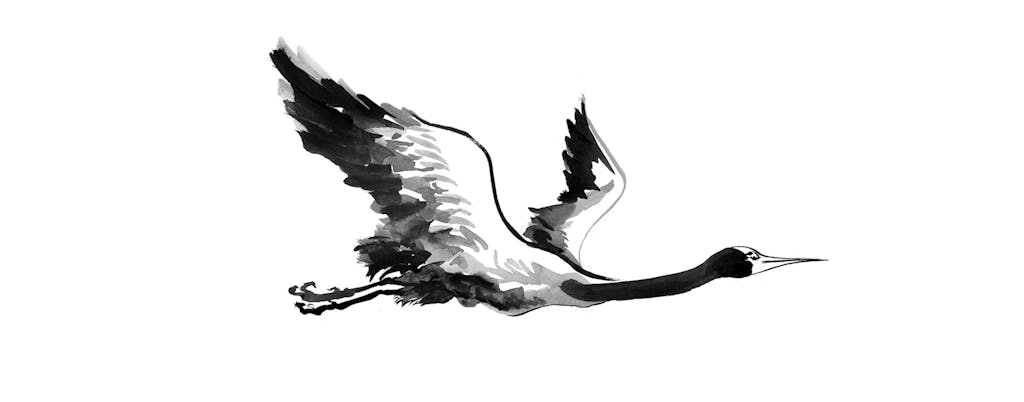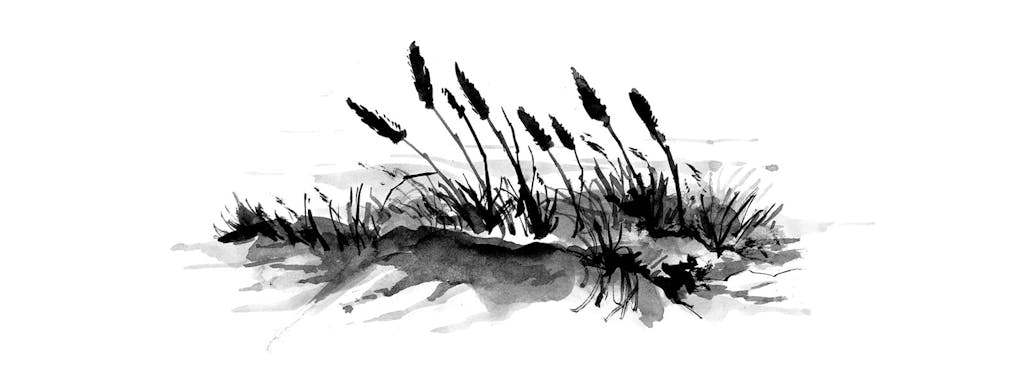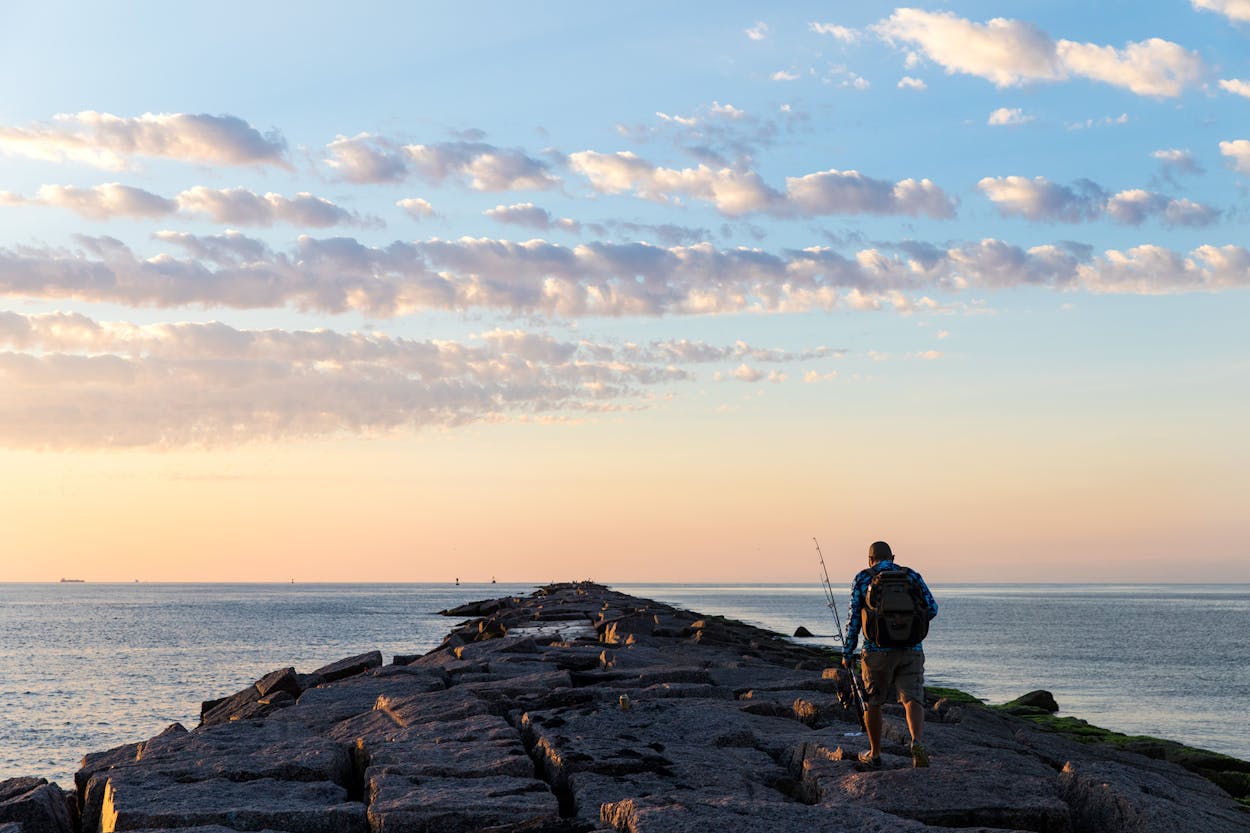With its natural coastline, fishing piers, and animal and bird refuges, the charming Rockport area has long attracted nature lovers and those seeking a quieter coastal respite. We talked to local guides about the impact of Harvey on the region as well as what visitors can expect as they return this summer. Hint: bring your fishing pole.

Hope on the Wings of the Whooping Crane
As Hurricane Harvey bore down on the Coastal Bend, many shorebirds that occupied the beaches and barrier islands found themselves planted in the storm’s cataclysmic path with no chance of escape. Immediate fatalities included multitudes of brown pelicans, great blue herons, and black skimmers.
People hoped the majestic whooping cranes, the tallest birds in North America, would find their way back to their winter habitat along the Aransas Bay marshes, which were hit hard by the devastating winds. The endangered whoopers, which typically arrive for the winter from Canada and stay through the spring, did return and were soon gorging on blue crabs and the wolfberries that grow on shoreline shrubs. “The cranes are where they have been,” said Captain Tommy Moore, who leads birding tours aboard the Skimmer, moored in Fulton Harbor.
A report from the National Audubon Society outlining conservation priorities in the wake of Harvey and Irma suggests that the 2017 storms spelled serious problems for assorted migratory species and shore nesters. From the Lower Rio Grande Valley to the Sabine River, Texas is a stopover for more than 98 percent of North America’s long-distance fliers. Many spoil islands that are crucial nesting habitats were stripped or eroded by winds, while beaches used by breeding plovers, American oystercatchers, and terns were reshaped or washed away.
Nonetheless, Brian Trusty, the vice president of Audubon’s Central Flyway program, remains hopeful. Restoration projects include new nesting platforms, debris removal, and replacing signs that remind people to give nesting birds space.

The Coastal Bend’s Long Recovery
“That’s the money shot,” says Sally Crofutt, the manager of the late conservationist Brien Dunn’s Fennessey Ranch, a four-thousand-acre spread in Refugio County, across Copano Bay from Rockport. The critter that has Crofutt puffed up is none other than a nine-banded armadillo, one of several species that lure nature photographers to the property. Its presence is a reminder that, despite more than $60,000 in property damage from Hurricane Harvey—which squatted above the ranch for eight hours and blew away its office in Bayside (destroying 24 years of Crofutt’s journals)—wildlife is starting to return to this landscape.
With its petroleum pump jacks and cattle, the Fennessey remains a curious ecotourism destination, offering a unique span of upland coastal prairie, groves of mature riverside forest, and freshwater marshes that, with four hundred species of birds, draw wildlife watchers from around the world. “In the long range, we’re going to see some enhancement to the habitat” as the ranch repairs damage, says Crofutt, surveying debris piles and downed pecan trees. “But in the short range, it’s going to be hard.”
Public land managers across the region tell a similar story. According to Texas Parks and Wildlife, sixteen state parks suffered damage, to the tune of $20 million, with Goose Island and Mustang Island taking the brunt of Harvey. Roads were wiped out, and dunes have been lost. But amid the shredded oak motts stands a miracle of sorts: Goose Island’s famous Big Tree, a centuries-old live oak, survived it all.

The Gulf Waters are Stocked
Anglers across Texas have been waiting for months to learn what Harvey has meant for port and commercial fisheries on the Gulf. Its destructive winds topped 130 miles per hour, leading to an epic tidal surge followed by record rains that flushed the salty Texas coast with freshwater. Yet, despite the damage to buildings up the block from his Rockport office, Texas Parks and Wildlife coastal fisheries science director Mark Fisher says the fish should be just fine.
“I’m surprised that the impacts from Harvey have been so short-term in terms of natural resources,” says Fisher, who after the storm sent researchers to survey popular game fish such as speckled sea trout, redfish, and black drum. The unusually cold winter helped the fish by keeping people off the water, he says.
With the bait shops loading up on live shrimp and the boat ramps back online, perhaps the only people more eager to get on the water than Texas anglers are guides, many out of work since late August. In Aransas Pass, kayak-angling specialist Dean Thomas says business is slow, despite promising reports. “The reds are where they’re supposed to be, the trout are where they’re supposed to be, and there’s a lot more keeper-class fish in the system.”
Larry McKinney, the executive director of the Harte Research Institute, expects the Texas gulf to enjoy increased productivity in the months ahead. As with other tropical storms, floodwaters from Harvey actually recharged the bayside marshes and estuaries by sweeping nutrients and sediment down into areas used by bait such as blue crabs. “The hurricanes come in and stir up the pot, and everybody eats well,” he says. “I’m not going to say it’s a good thing, because of the cost to our communities. But I did catch a 24-inch trout the other day.”
- More About:
- Hunting & Fishing
- Hurricane Harvey
- Rockport







